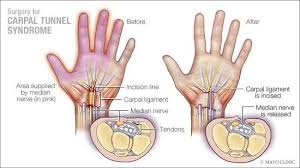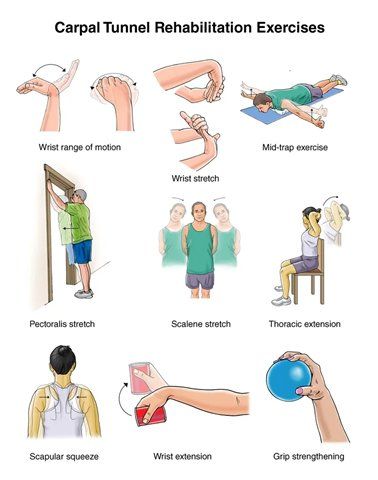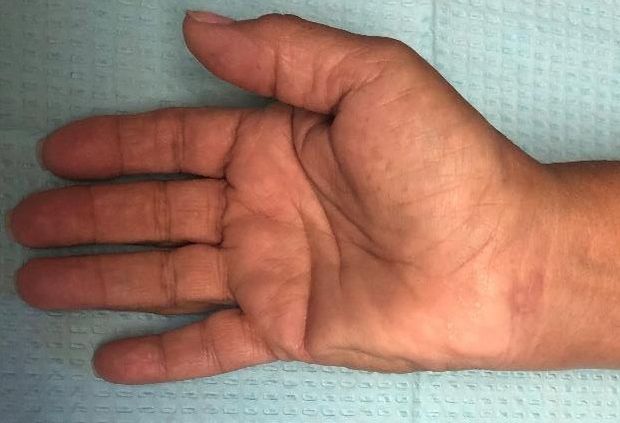Understanding Carpal Tunnel
Understanding Carpal Tunnel Syndrome
Carpal Tunnel Syndrome (CTS) At a Glance
CTS is a medical condition that causes numbness, tingling, and weakness in the hand, due to compression of the median nerve by the Transverse Carpal Ligament. Pain may extend throughout the arm and is commonly experienced during the night. Conservative treatment options exist. When surgery is indicated, a 15-minute procedure provides immediate and long-lasting relief.
Symptoms
- Pain and numbness in the hand and potentially the arm
- Weakness and tingling
- Symptoms exacerbated during the night while sleeping
-
(CLICK IMAGE TO ENLARGE)
Button
Anatomy
- Floor and sides of the tunnel are formed by small wrist bones
- Roof of the tunnel is made of the Transverse Carpal Ligament
- Finger tendons and the median nerve run through the tunnel
Conservative Treatments
- Splinting, bracing, reduction in symptom causing activities, pharmacological intervention
Personalized Conservative Treatment
Not all patients will require surgery, and the treatment plan is tailored to the individual depending on the underlying cause of CTS.
- Nonsteroidal anti-inflammatory drugs (NSAIDS) may ease CTS that has been present for a short time or due to strenuous activity but are not recommended for long-term use, as the nerve damage is likely still occurring despite the relief in symptoms.
- Corticosteroids, such as prednisone, or lidocaine can be injected directly into the wrist or taken by mouth (in the case of prednisone) to relieve pressure on the median nerve and
- provides temporary relief to those with mild or intermittent symptoms. Injections should not be done repeatedly, however.
- Stretching and strengthening exercises can be performed with supervision from a trained OT/PT.
- Bracing or splinting can be used in conjunction with other treatment options, especially at night.
-
(CLICK IMAGE TO ENLARGE)
Button
Dr. Shin is a pioneer in the field of minimally-invasive carpal tunnel surgery, should surgery be necessary
Using a very small and state-of-the-art camera system, minimally invasive carpal tunnel surgery limits the incision size and ensures a rapid return to daily activities. Other benefits include:
- Incision is cosmetically hidden in the wrist rather than on the palm
- Decreased pain at incision site
- Faster return to daily activities
- Reduced infection risk
- Small scar
- Ability to perform surgery on both hands in the same operation
Eon K. Shin
,
This is a placeholder for the Yext Knolwedge Tags. This message will not appear on the live site, but only within the editor. The Yext Knowledge Tags are successfully installed and will be added to the website.
This is a placeholder for the Yext Knolwedge Tags. This message will not appear on the live site, but only within the editor. The Yext Knowledge Tags are successfully installed and will be added to the website.
CONTACT US
This is a placeholder for the Yext Knolwedge Tags. This message will not appear on the live site, but only within the editor. The Yext Knowledge Tags are successfully installed and will be added to the website.
Privacy Policy
| Do Not Share My Information
| Conditions of Use
| Notice and Take Down Policy
| Website Accessibility Policy
© 2024
The content on this website is owned by us and our licensors. Do not copy any content (including images) without our consent.




